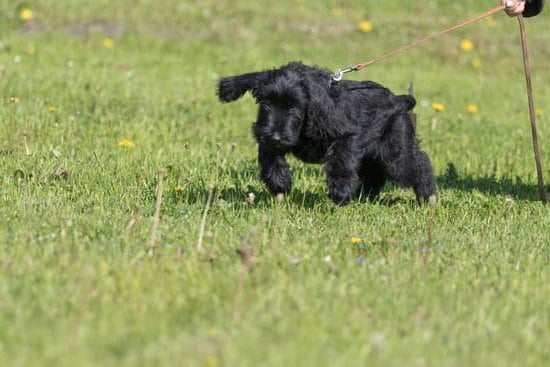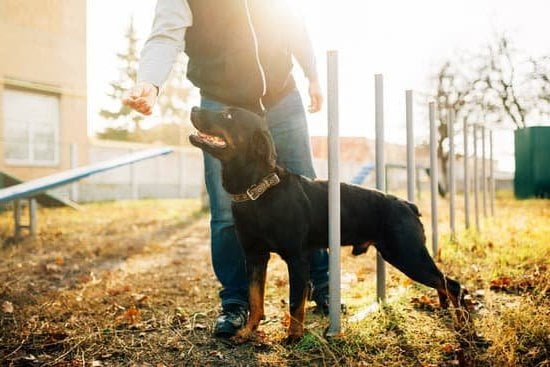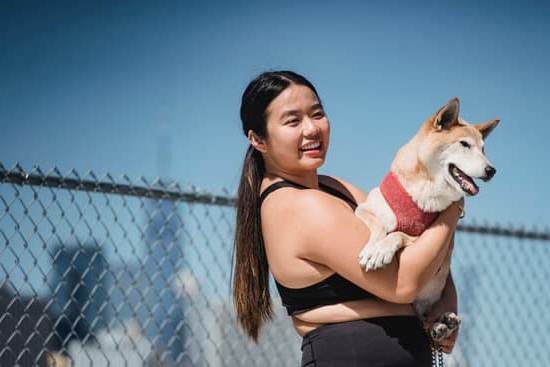Introduction
Treat pouches are small bags designed to hold rewards during the dog training process. As treats are an integral part of most dog training, having a dedicated pouch can make the whole process simpler and more streamlined. Having easy access to treats can also help the trainer give out rewards more frequently which results in better results for the dog. Treat Pouches also provide a hygienic way of carrying and dispensing yummy treats for your pooch so you do not have to worry about dropping treats on the floor or having them exposed to germs from hands.
By providing an easy-to-access storage space for snacks, trainers can keep treats within arm’s reach at all times, making reward-based learning faster and easier with fewer distractions. Furthermore, treat pouches can help focus a pup’s attention both towards their handler (which is good for bonding) and away from surrounding distractions such as other people or animals. This makes training sessions much smoother and less confusing for the pup as they understand that good behaviour always comes with a desirable outcome (the treat). Additionally, treat pouches are designed to be comfortable enough so you can wear it while playing games or going on walks without hindering performance. Lastly, unlike traditional training methods where trainers may carry large containers full of treats, treat pouches allow trainers to bring just the right amount of food instead of carrying around excess weight – making them more convenient and portable!
Benefits of Using Treat Pouches For Dog Training
Treat pouches are a great tool to have when group training or agility classes. Rather than having to carry all your treats in a pocket, bag, or purse, treat pouches strap right around your waist, leaving both hands free to train with your pup. Treat pouches also allow for quick and discreet rewards during training sessions. When using treats as a reward for following commands, you want the focus of the pup to be on their behavior instead of digging around for treats – treat pouches effectively allow for this. Additionally, treat pouches make it easy to quickly grab a handful of treats without having to worry about spilling them or dropping them on the ground. Treat pouches are especially helpful when teaching new skills such as recall or stay since quick access to rewards is key for speedy learning. Finally, treat pouches can store various sizes of treats and even water bottles, making them a one-stop-shop accessory for any type of dog training!
Types of Treat Pouches & Our Recommendation
Treat pouches are an essential tool to have when training dogs, as they make it easier to give your pup a reward he or she desires without providing a vet bill. There are several different types of treat pouches available, from waist packs and pocket bags to vests and spaceback models; so whichever style best suits your routine is the one we recommend. Many treat pouches come equipped with extra features such as clip-on waste bags for easy clean-up and adjustable straps that accommodate various sizes. You may also want to consider purchasing a healthy treat pouch designed specifically for dogs that suffer from allergies or food intolerances that cannot eat traditional treats. Additionally, bright colors can help you easily locate a dropped bag as well as make them attractive additions to any look! No matter which pouch you decide upon, it’s important to remember that any rewards given should only be done so in moderation; both in terms of calories consumed as well as treats used while training!
Getting Started
Treat pouches are essential tools for training your dog. When used strategically, treat pouches help to reward and motivate your dog for good behavior. Treats can be added to the pouch in advance, making it easy to use during training sessions. To begin training with a treat pouch, you should understand the basics of positive reinforcement training. Positive reinforcement uses rewards and praise as motivators for desired behaviors. By rewarding your dog when they show desired behaviors, you can teach them what is expected from them over time. With consistent and clear instructions, your dog will start to associate rewards with desirable behaviors and progress quickly in their learning!
When getting started with treat pouches for training, it’s important to introduce them correctly. Show your dog the pouch and give verbal cues before adding a small treat into it. This will help avoid scaring or confusing the dog while they get used to the new object. As you give verbal cues and add treats to the pouch, make sure to reward good behaviors as soon as possible after they occur – this immediate response will let your pup know what is expected from them more quickly! To maintain your pup’s interest in learning, regularly change up the type of reward given during each session – having access to multiple treats within the pouch gives you a variety of rewards that you can use during each session. Lastly, stick to short sessions that last 5-10 minutes at most – that way, you won’t tire out your pup too quickly and diminish their enthusiasm towards learning over time!
Tips For Making Treat Pouch Training More Effective
When training with a treat pouch, there are some tips to help you maximize the effectiveness of the training.
First, make sure your dog and yourself know how to use the treat pouch properly. Check that your dog understands what behavior you expect from them when they receive a treat from the pouch and make sure to be consistent with your reward system.
Second, start off slow and small scale with using the treat pouch. Begin by introducing your dog to it through associating it with positive feedback, such as praising or giving treats for calm behavior when near or around the treat pouch. Next, progress over time to having your dog perform a simple task that requires them to reach into the pouch for their reward; such as sit commands or stay commands. This will also help create associations between obedience exercisers and rewards/treats dispensed from the treat pouch so that eventually commands can be met without needing reinforcement from rewards inside the pouch.
Third, consider adding variety in terms of treats used in training sessions for more successful results with training using a treat pouch. Dogs enjoy different types of food and treats, if available select different types which may act as higher value rewards for tougher tasks or more effective drivers for early learning in basic obedience classes. Varying treats will keep both you and your pup engaged during training sessions and allow for more success with obtaining desired behaviors from your pet.
Avoiding Common Pitfalls In Treat Pouch Training
Treat pouches can be a useful tool for dog owners who want to train their pet but there are common pitfalls to avoid when using them. The biggest mistake is not properly introducing the treat pouch or allowing your dog to become too aggressive or treat focused. This is why it is important to introduce the pouch slowly and reward sparingly, increasing rewards over time only as your pup’s behavior demonstrates that the action being trained is understood. You should also take extra care to make sure you’re following up each treat with a command and praise so that your pup learns that treats are associated with good behavior rather than just being freebies. Your pup must learn that performing a trick or responding well to training earns a reward – no reward should ever be given without either of these occurring first. Additionally, only bring out the treats when training and never give them randomly when not in session, as this could lead them to expect treats all the time even if they don’t follow commands or obey rules. Finally, when your pup has reached mastery levels on any particular command, start phasing out treats until they are relying on verbal cues and praise alone. Doing this will give you better control overall and help ensure future successes in using the treat pouch as a positive reinforcement training tool.
Conclusion
Treat pouches are a great tool for dog training. Not only do they provide dogs with an immediate reward, but they are also beneficial for teaching accountability and fostering good behaviour. When using treat pouches during training, dogs become more engaged and motivated to do their best. They also help make sure that treats are readily available during long training sessions to ensure the maximum effectiveness of each exercise (which helps progress with learning at a much quicker rate). Treat pouches can be used both indoors and outdoors, allowing you to create consistent methods of reinforcement no matter where you are or what the situation calls for.
To maximize your results when using treat pouches in training, start off by treating often and rewarding success quickly. Consistency is key in achieving long-term goals, so make sure you always respond the same way whenever your dog successfully completes an exercise. When giving rewards from treat pouches, use an upbeat tone along with positive body language; this sends your pup a message that he’s done something right and encourages him to keep putting forth his best effort. Lastly, as with all forms of dog training, it’s important that you practice patience and stay firm yet gentle–your pup will learn the best when he feels reassured by your presence rather than scolded or threatened. With these methods in place, you’ll be able to maximize your results when utilizing treat pouches for dog training!

Welcome to the blog! I am a professional dog trainer and have been working with dogs for many years. In this blog, I will be discussing various topics related to dog training, including tips, tricks, and advice. I hope you find this information helpful and informative. Thanks for reading!





